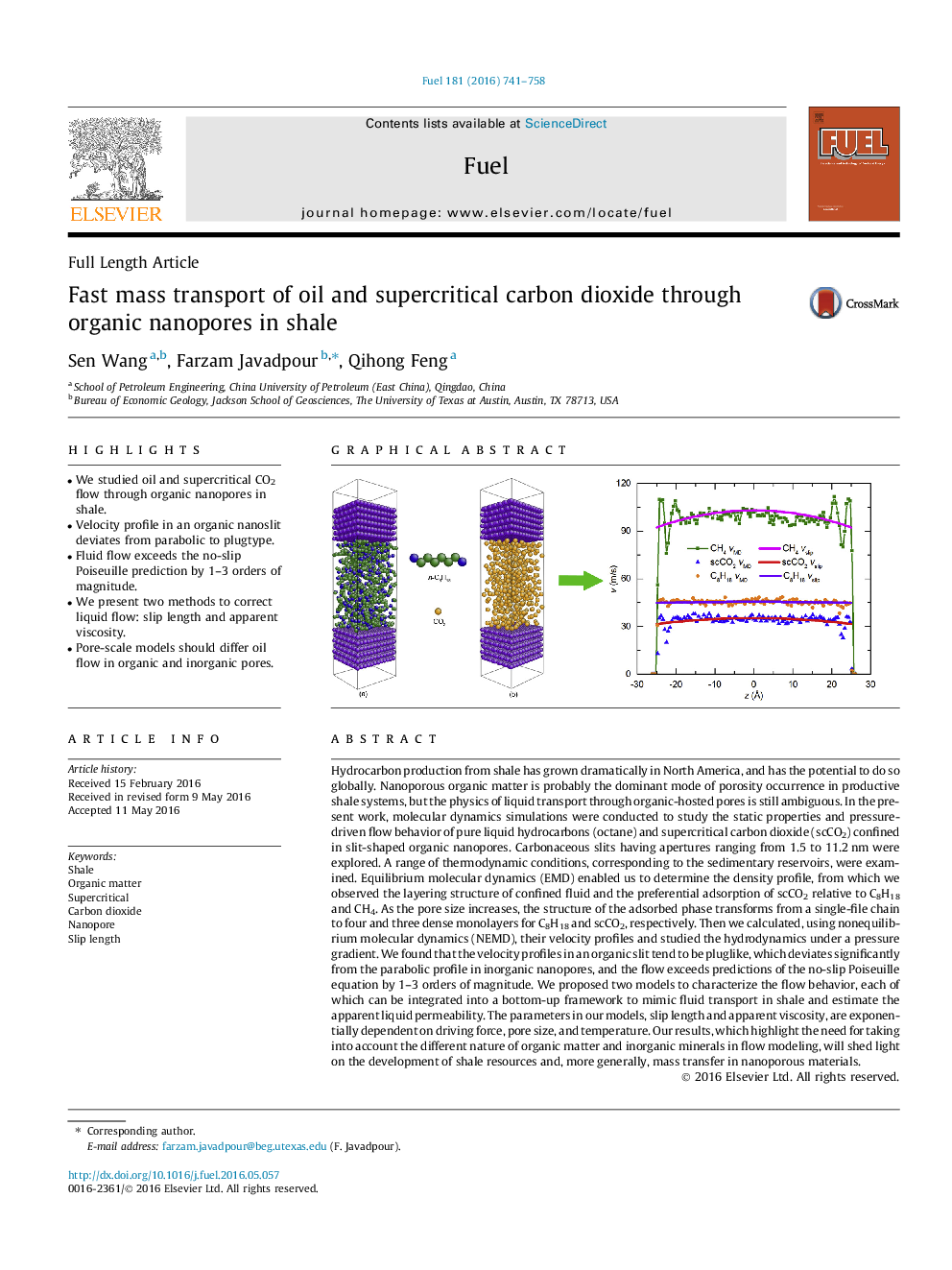| کد مقاله | کد نشریه | سال انتشار | مقاله انگلیسی | نسخه تمام متن |
|---|---|---|---|---|
| 204961 | 461093 | 2016 | 18 صفحه PDF | دانلود رایگان |
• We studied oil and supercritical CO2 flow through organic nanopores in shale.
• Velocity profile in an organic nanoslit deviates from parabolic to plugtype.
• Fluid flow exceeds the no-slip Poiseuille prediction by 1–3 orders of magnitude.
• We present two methods to correct liquid flow: slip length and apparent viscosity.
• Pore-scale models should differ oil flow in organic and inorganic pores.
Hydrocarbon production from shale has grown dramatically in North America, and has the potential to do so globally. Nanoporous organic matter is probably the dominant mode of porosity occurrence in productive shale systems, but the physics of liquid transport through organic-hosted pores is still ambiguous. In the present work, molecular dynamics simulations were conducted to study the static properties and pressure-driven flow behavior of pure liquid hydrocarbons (octane) and supercritical carbon dioxide (scCO2) confined in slit-shaped organic nanopores. Carbonaceous slits having apertures ranging from 1.5 to 11.2 nm were explored. A range of thermodynamic conditions, corresponding to the sedimentary reservoirs, were examined. Equilibrium molecular dynamics (EMD) enabled us to determine the density profile, from which we observed the layering structure of confined fluid and the preferential adsorption of scCO2 relative to C8H18 and CH4. As the pore size increases, the structure of the adsorbed phase transforms from a single-file chain to four and three dense monolayers for C8H18 and scCO2, respectively. Then we calculated, using nonequilibrium molecular dynamics (NEMD), their velocity profiles and studied the hydrodynamics under a pressure gradient. We found that the velocity profiles in an organic slit tend to be pluglike, which deviates significantly from the parabolic profile in inorganic nanopores, and the flow exceeds predictions of the no-slip Poiseuille equation by 1–3 orders of magnitude. We proposed two models to characterize the flow behavior, each of which can be integrated into a bottom-up framework to mimic fluid transport in shale and estimate the apparent liquid permeability. The parameters in our models, slip length and apparent viscosity, are exponentially dependent on driving force, pore size, and temperature. Our results, which highlight the need for taking into account the different nature of organic matter and inorganic minerals in flow modeling, will shed light on the development of shale resources and, more generally, mass transfer in nanoporous materials.
Figure optionsDownload as PowerPoint slide
Journal: Fuel - Volume 181, 1 October 2016, Pages 741–758
